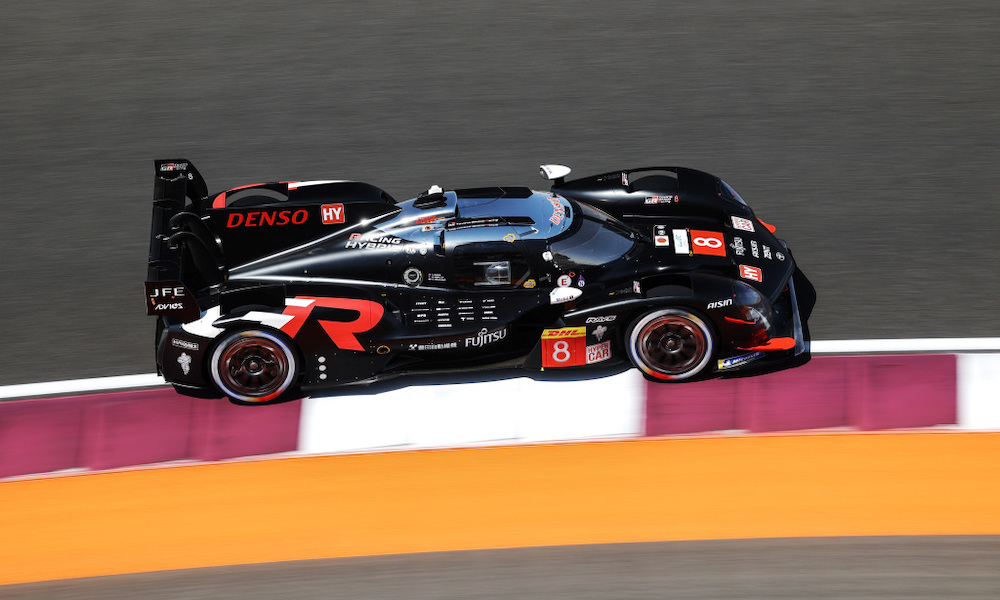On the ground at Imola ahead of what promises to be a landmark weekend for the FIA WEC, with a new venue and a record crowd (for WEC races outside Le Mans) expected, there are so many significant Hypercar storylines to track. One of them is whether or not Toyota can rediscover its 2023 form, which saw it win all but one of the races, setting the bar for the other factory teams to match.
A year on from its dominant start to last season and just one race into the current campaign, it’s already clear that the task at hand for the team is an unfamiliar one: rather than being chased, it is doing the chasing.
The team has returned with an almost entirely unchanged pair of GR010 HYBRIDs and finds itself racing as part of a larger and more experienced Hypercar field. As such, with BoP governing the class and a pair of new circuits to the championship placed at the start of the season, it will be the hardest-fought campaign yet for Toyota’s long-standing WEC program.
Speaking with RACER ahead of the track action this weekend, No. 8 driver Brendon Hartley agrees that it’s tough to predict how Toyota will fare at Imola, after a challenging week to kick off the WEC season in Qatar, where its GR010s ended off the podium in fifth and eighth. The question is whether or not that result was a blip.
The Japanese-flagged team heads into this event, as it did at Qatar, with no prior testing at the circuit. And once again, this isn’t the case for everyone, as a number of teams have already tested at the fabled venue in preparation for its first WEC race, including Cadillac, Porsche, JOTA and Ferrari, who all expect to hit the ground running when track action starts tomorrow.
As a result, Hartley feels the team doesn’t yet have any expectations, though he is confident that the years of experience that the team has with the GR010 will enable it to get into a setup window “pretty quickly”. He is energized by the increased competition and prospect of returning to Imola, a circuit he hasn’t driven since his days racing for Murphy Prototypes in the ELMS’ LMP2 class aboard an ORECA 03 more than a decade ago.
“It’s a very tight track here for these big cars, but it should be a nice race here,” he says. “We didn’t test here, but in the sim it felt like such an enjoyable track to drive. It’s traditional, which I think is cool. It’s got so much character, you can really use the curbs and it’s up and down.
“Traffic is going to be one of the big topics. You’ll need to keep out of trouble because I am sure there are going to be incidents.
“A lot has changed to the sport since I last visited here, yet the circuit, aside from some new curbs, is pretty much identical.”
Looking back at the opening round of the season, Hartley was keen to point out how important it was that the team collected a decent haul of points with both cars despite being off the pace during the race.

The expanded 19-car Hypercar class for this year means it has never been harder to score well and finish high up the order on weekends that don’t go to plan, simply because there are so many more cars in the class run by factories and top-quality privateers in the case of JOTA and Proton.
In what areas does he feel the Toyota team fell most short at the Lusail Circuit? Were the struggles down to BoP? Without directly saying it, Hartley hints that to a certain extent, this was the case. But he feels it was more than that. In part, Hartley says, the team felt hindered by the circuit type, as the GR010 tends to be at its best on bumpy circuits such as Sebring.
“It looked like we could challenge for Pole in Qualifying (in Qatar), but we definitely couldn’t get near that lap in the race whereas some of the others did,” he reflects.
“We salvaged points for the championship, which was key. But we didn’t have great pace. Some part of that was down to the track, but also we were the heaviest car, and if you keep adding weight to a car at some point the tires say ‘no’.”
He also feels that a year on from the first major influx of manufacturers to the top class, the gap between the new teams and Toyota on the operational side, has clearly shrunk.
“We’ve definitely been stronger at places like Sebring, and here at Imola, it’s much bumpier too, so it’s hard to predict,” he says. “What’s clear is that last year we set references on most tracks while our competition was taking steps along the way, and more steps over the winter months. We’ve seen that in Round 1, which is normal.
“We had an advantage last year, but the others have been catching us quickly. It’s going to be such a different track that it’s hard to read too much into the results at Qatar.”
Lucky for Toyota, characteristically, the Autodromo Enzo e Dino Ferrari is a totally different circuit to Qatar, and this should play into its hands. It’s an undulating track with plenty of bumps and narrow sections with limited runoff. The GR010, on paper at least, should feel more at home.
As for BoP, there have been plenty of adjustments made to the table for the second event utilizing the revised system for 2024, with decisions made based on data gathered from the best car from each manufacturer in Qatar. Those performances have been averaged out to create a performance window.
Now we wait to see what effect these tweaks will have on Toyota and the other manufacturers in the top class…
